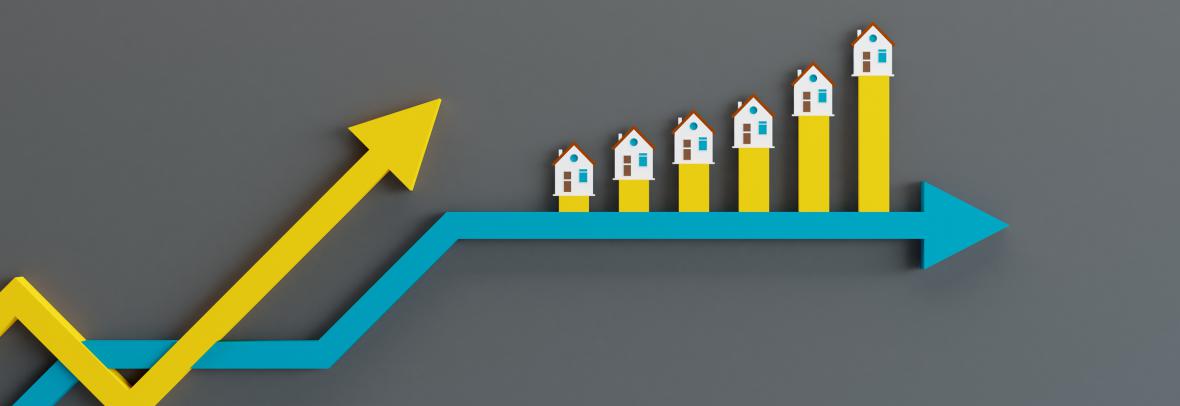
Prices rose in 99% of the 183 markets NAR measures quarterly, and 16% (to $363,700) overall. Of the top 10 metros for year-over-year price gains, five are in Fla.
WASHINGTON – In the third quarter of 2021, strong buyer demand and limited housing supply led to median sales prices rising for existing single-family homes in all but one of 183 markets measured by the National Association of Realtors® (NAR).
NAR’s latest quarterly report found that four out of five (78%) of 183 markets saw double-digit year-over-year price increases, though that’s fewer than in the second quarter (94%). Three metro areas saw price gains over 30% year-to-year – but again, fewer than the number in the previous quarter.
“Home prices are continuing to move upward, but the rate at which they ascended slowed in the third quarter,” says Lawrence Yun, NAR chief economist. “I expect more homes to hit the market as early as next year, and that additional inventory, combined with higher mortgage rates, should markedly reduce the speed of price increases.”
The median sales price of single-family existing homes climbed 16% from one year ago to $363,700, a slower pace in comparison to the preceding quarter (22.9%). All four major regions had double-digit year-over-year price growth, led by the Northeast (17.5%), followed by the South (14.9%), the Midwest (10.7%) and the West (10.3%).
Five of top 10 year-to-year price gains in Fla. metros
The markets with the highest year-over-year price gains were:
- Austin-Round Rock, Texas (33.5%)
- Naples-Immokalee-Marco Island, Fla., (32.0%)
- Boise City-Nampa, Idaho (31.5%)
- Ocala, Fla. (29.7%)
- Punta Gorda, Fla. (27.5%)
- Salt Lake City, Utah (26.2%)
- Phoenix-Mesa-Scottsdale, Ariz. (25.8%)
- Sebastian-Vero Beach, Fla. (25.7%)
- Port St. Lucie, Fla. (24.9%)
- New York-Jersey City-White Plains, N.Y.-N.J. (24.5%)
“While buyer bidding wars lessened in the third quarter compared to early 2021, consumers still faced stiff competition for homes located in the top 10 markets,” says Yun. “Most properties were only on the market for a few days before being listed as under contract.”
The most expensive markets in the third quarter were San Jose-Sunnyvale-Santa Clara, Calif. ($1,650,000); San Francisco-Oakland-Hayward, Calif. ($1,350,000); Anaheim-Santa Ana-Irvine, Calif. ($1,100,000); Urban Honolulu, Hawaii ($1,047,800); Los Angeles-Long Beach-Glendale, Calif. ($860,900); San Diego-Carlsbad, Calif. ($850,000); Boulder, Colo. ($769,400); Seattle-Tacoma-Bellevue, Wash. ($708,400); Bridgeport-Stamford-Norwalk, Conn. ($658,900); and Boston-Cambridge-Newton, Mass.-N.H. ($657,800).
In the third quarter, the average monthly mortgage payment on an existing single-family home – financed with a 20% down payment, 30-year fixed-rate loan – rose to $1,214, a $156 year-to-year increase. With the price of a typical existing single-family home growing by $50,300, the mortgage payment climbed even as the average mortgage rate in the third quarter fell to 2.92% from 3.01% one year ago.
Among all homebuyers, the monthly mortgage payment as a share of the median family income increased to 16.6% (14.9% in 3Q, 2020). For first-time buyers, the typical mortgage payment on a 10% down payment loan increased to 25.2% of the median family income (22.6% one year ago). A mortgage is considered affordable if the payment amounts to no more than 25% of the family’s income.
“For the third quarter – and for 2021 as a whole – home affordability declined for many potential buyers,” says Yun. “While the higher prices made it extremely difficult for typical families to afford a home, in some cases the historically-low mortgage rates helped offset the asking price.”
A family typically needed an income of more than $100,000 to affordably pay a 10% down payment mortgage in 17 markets, matching the prior quarter. In 83 markets, a family typically needed an income of less than $50,000 to afford a home (85 markets in the prior quarter).
© 2021 Florida Realtors®
Go to Source
Author: kerrys



